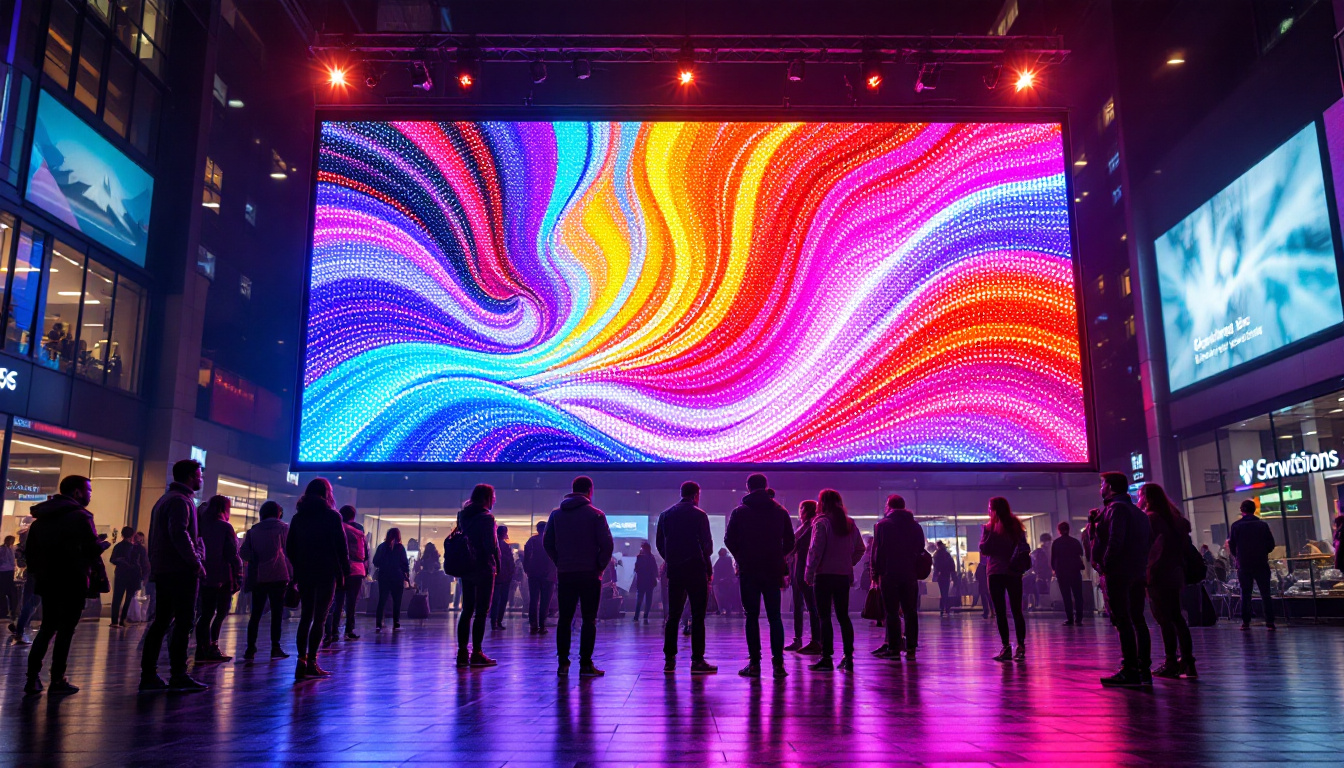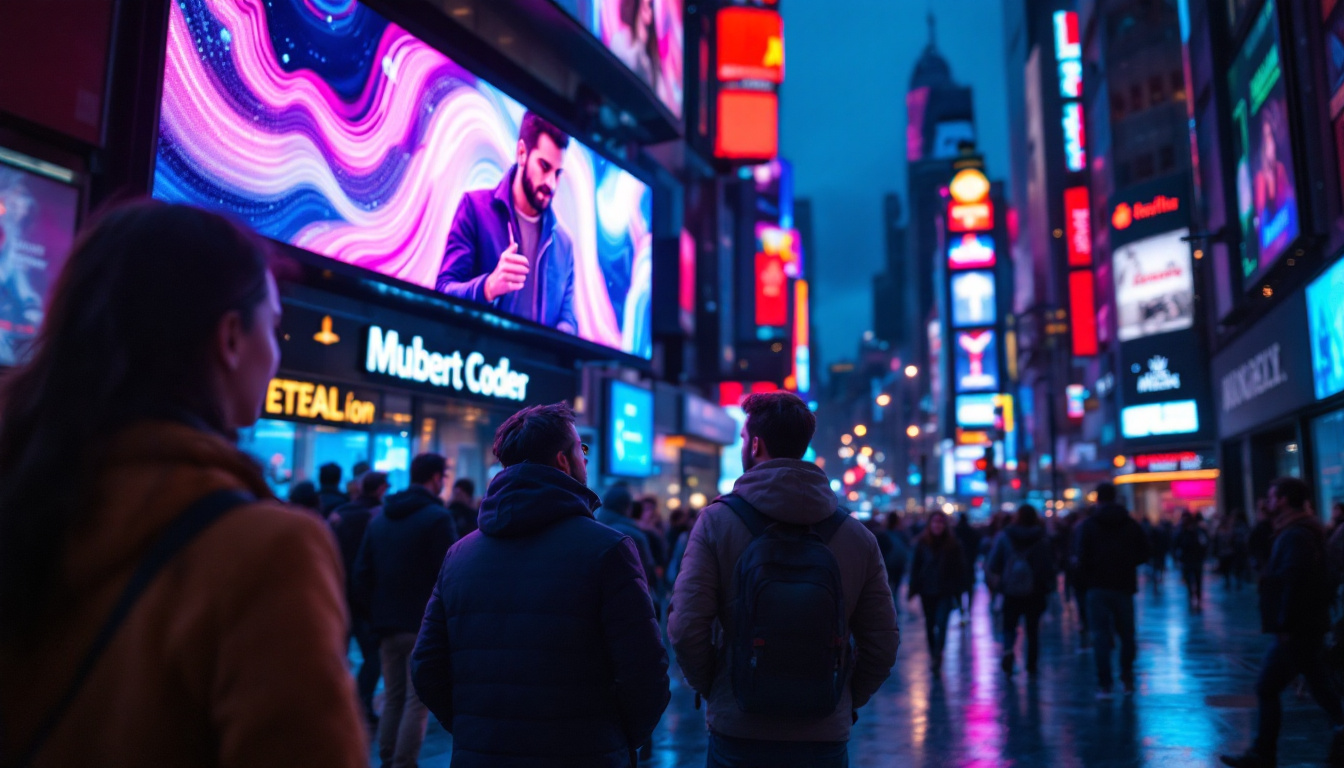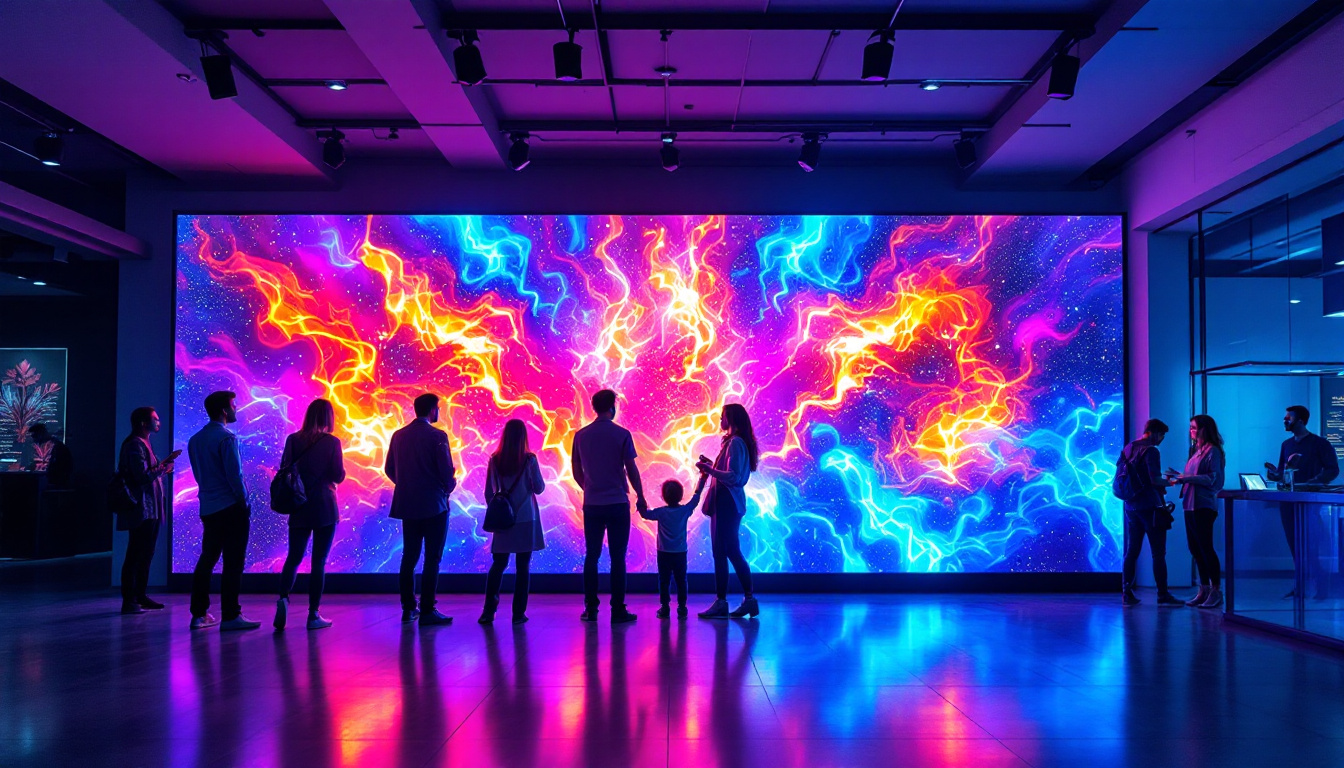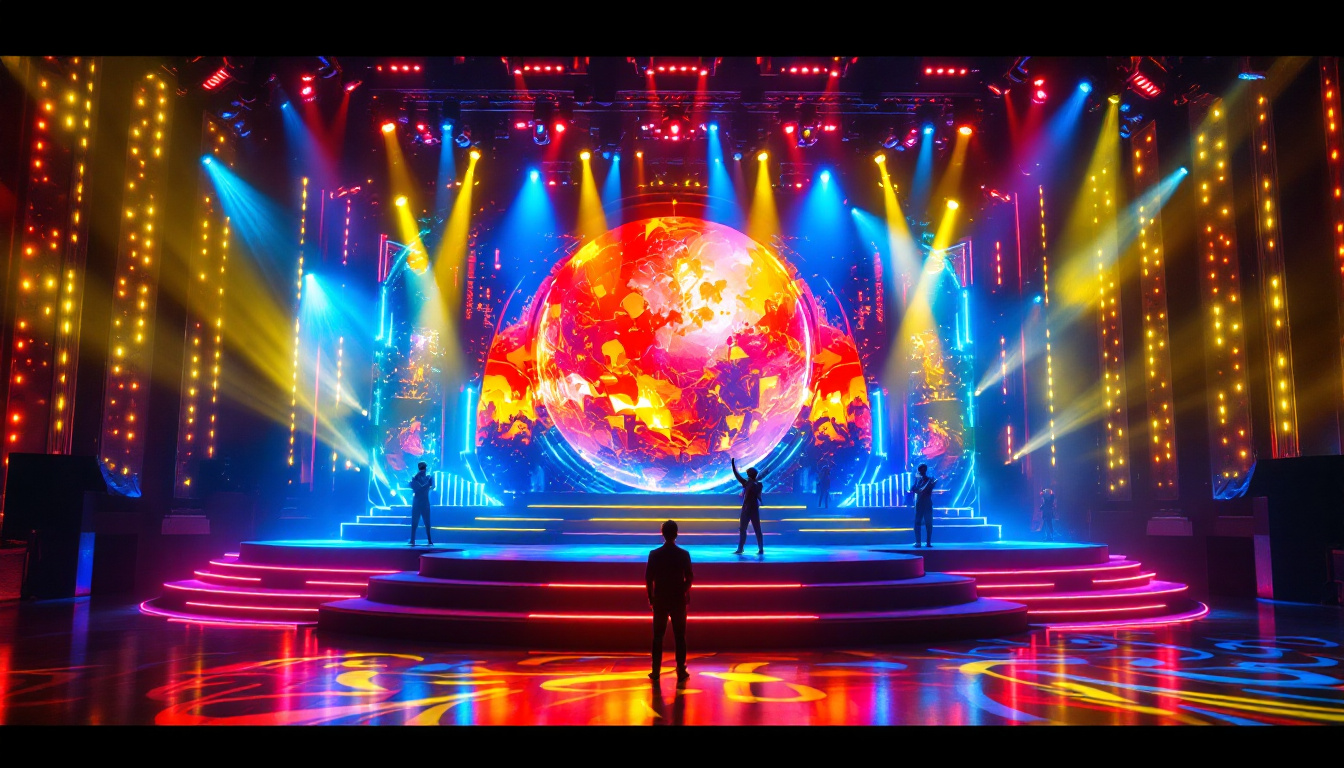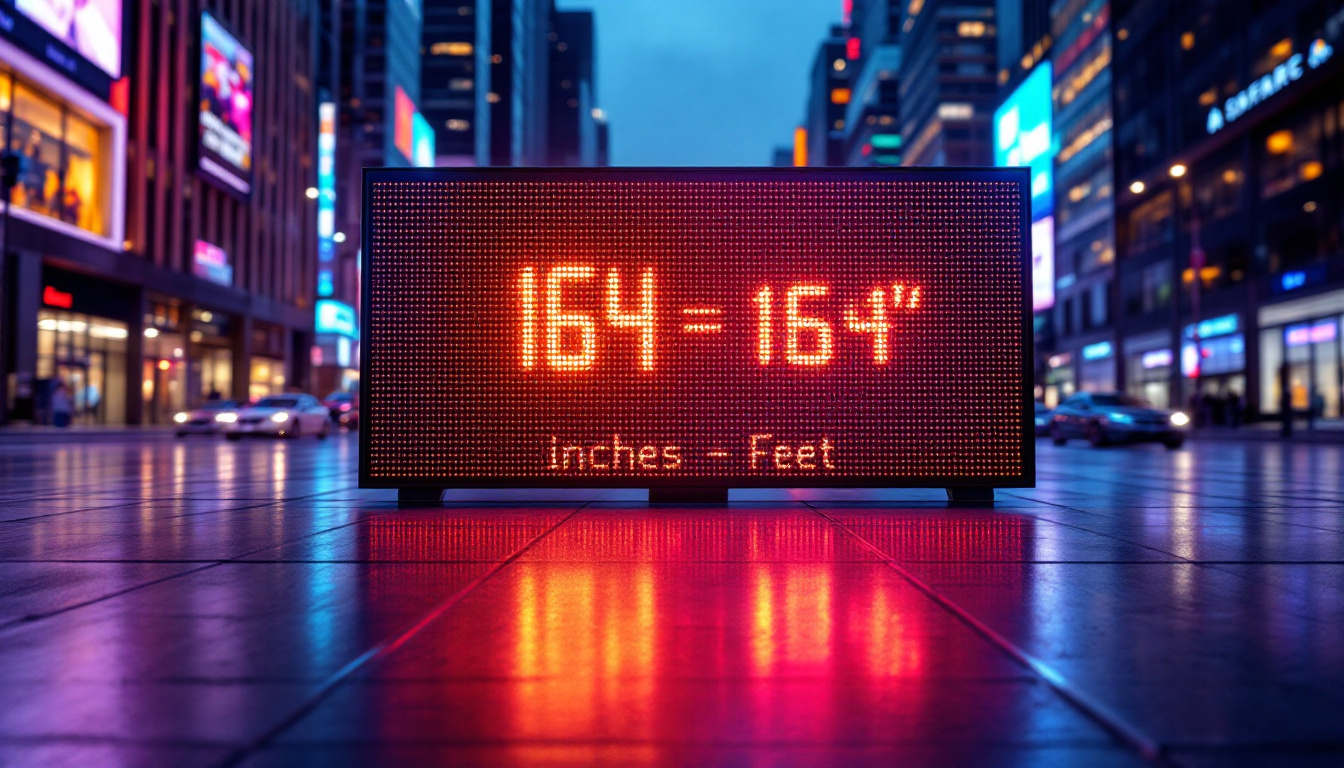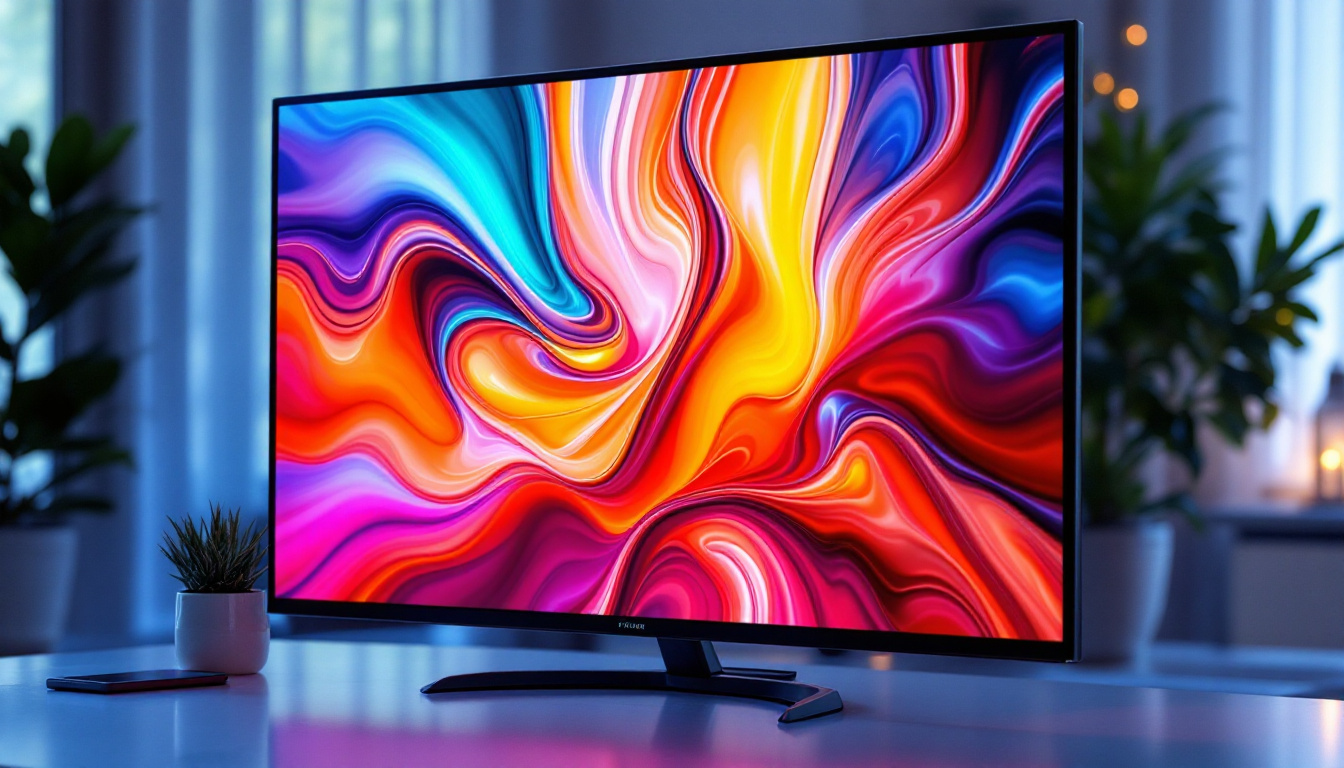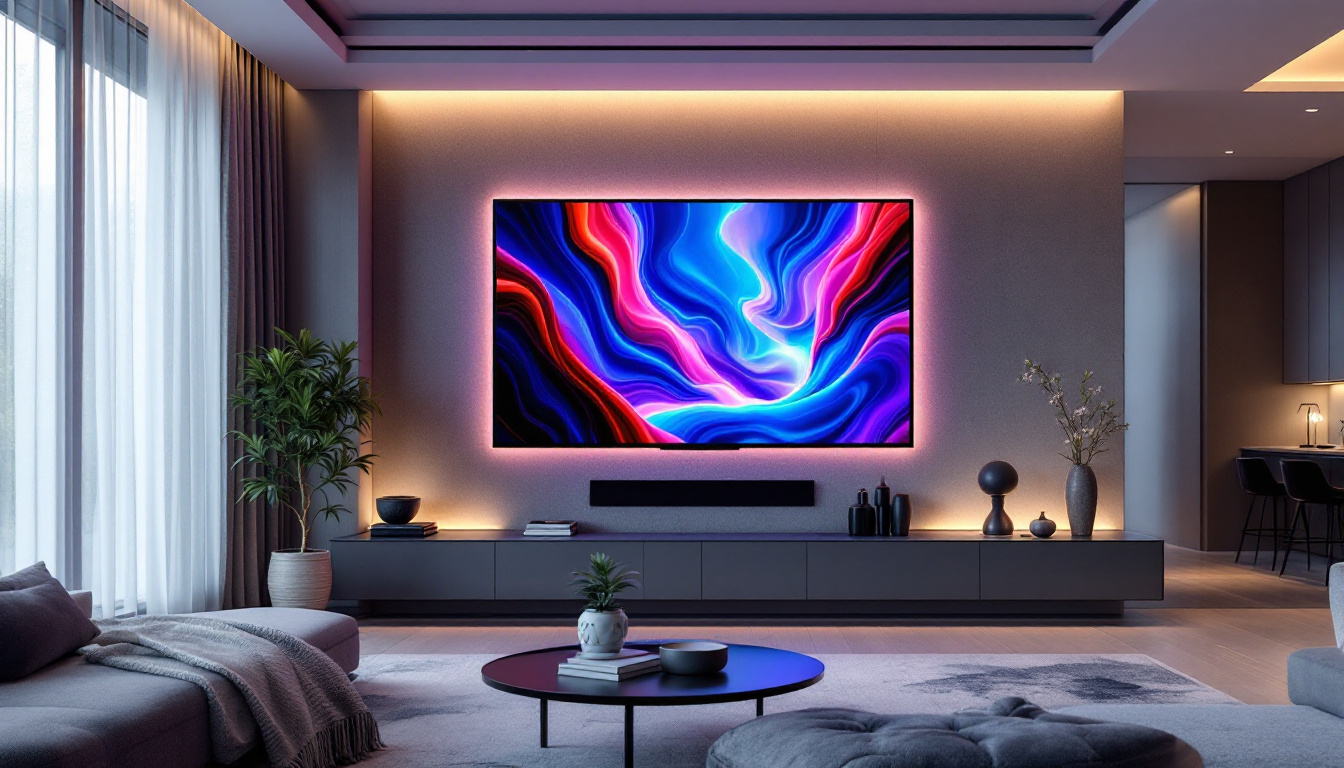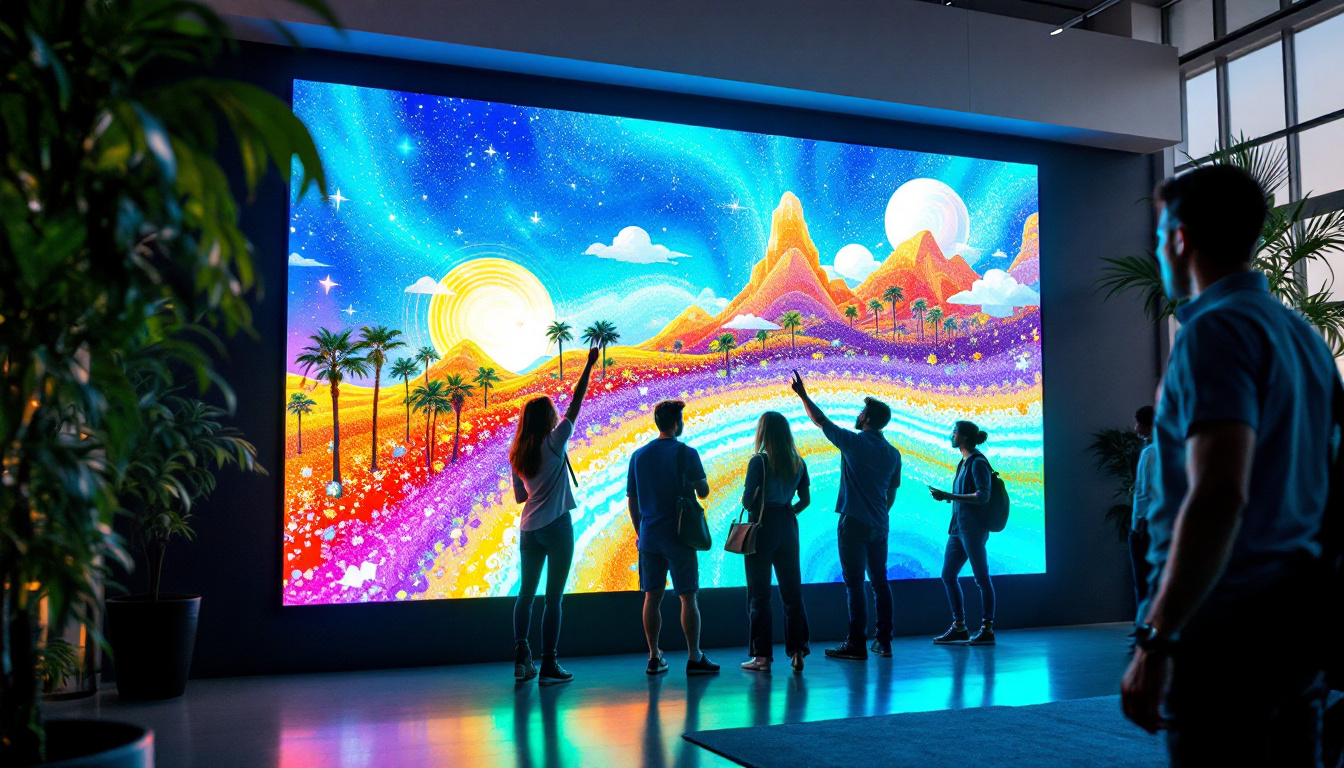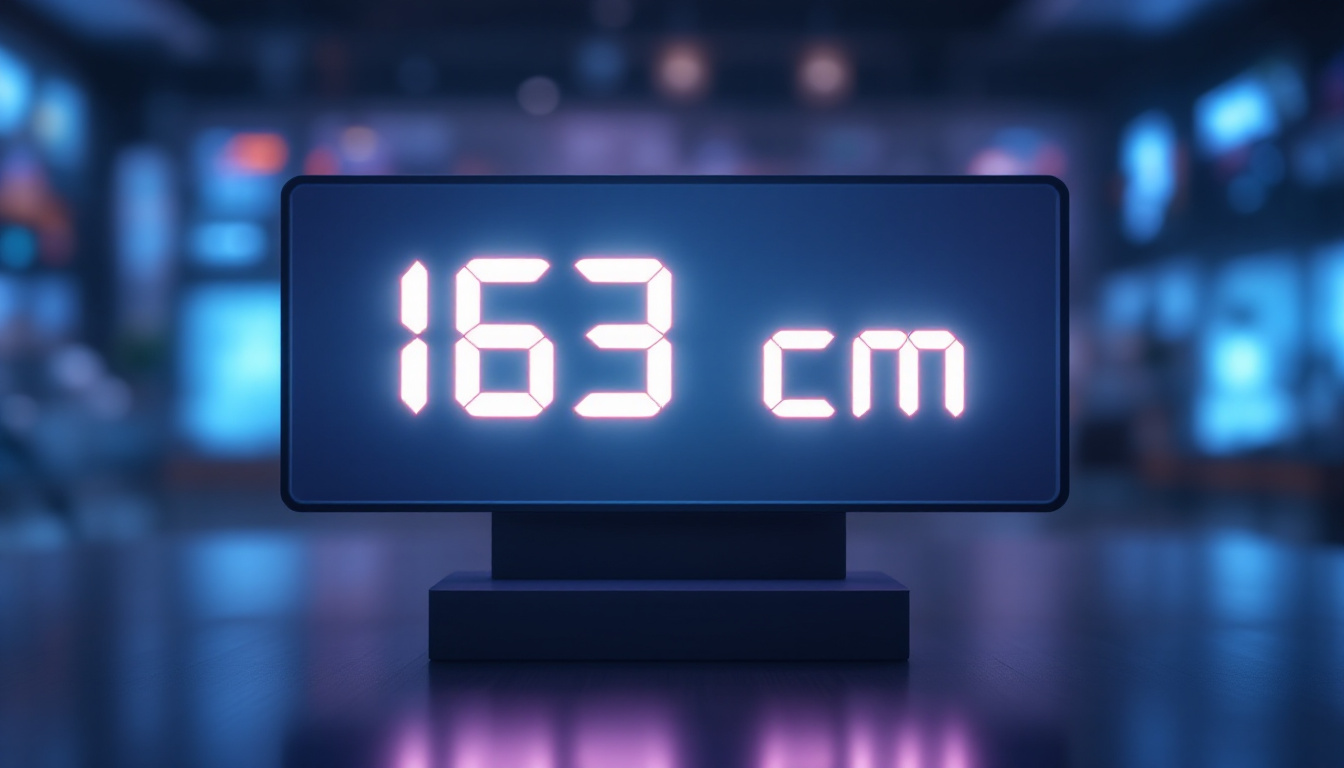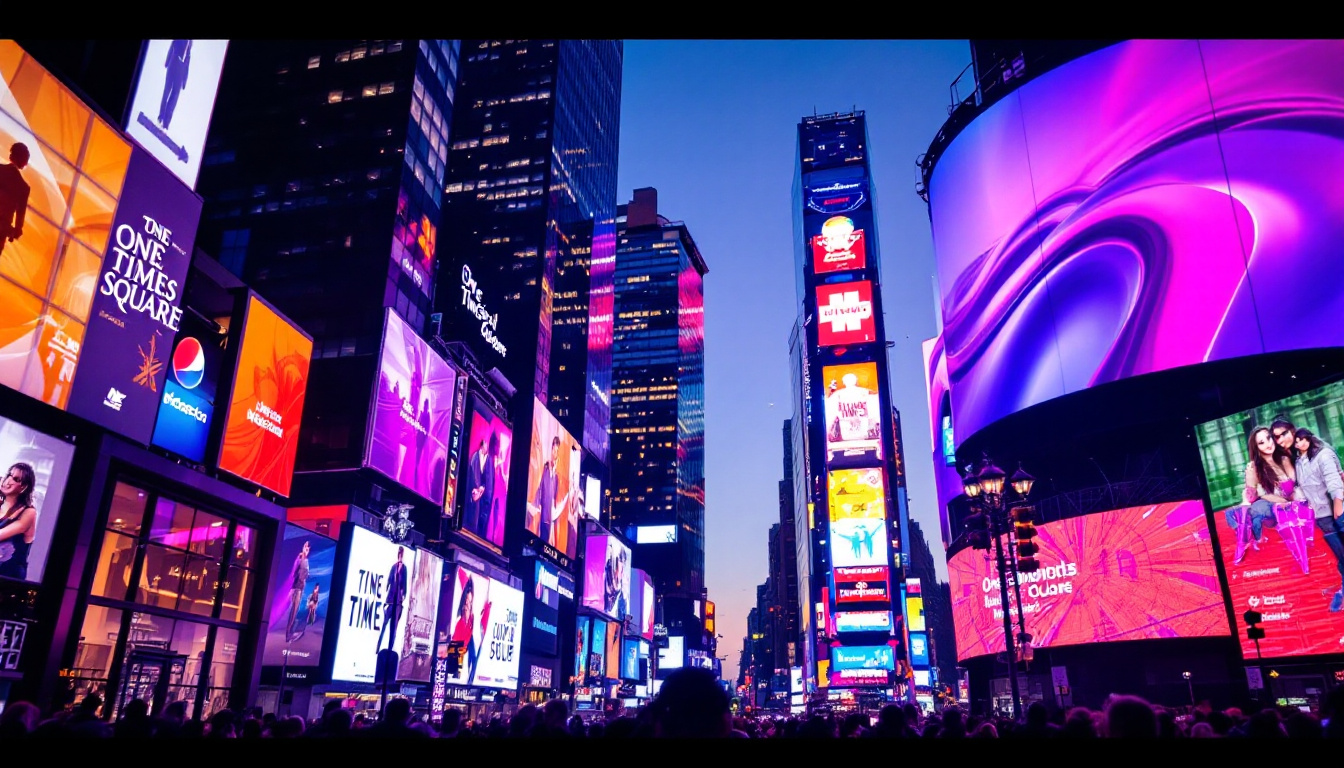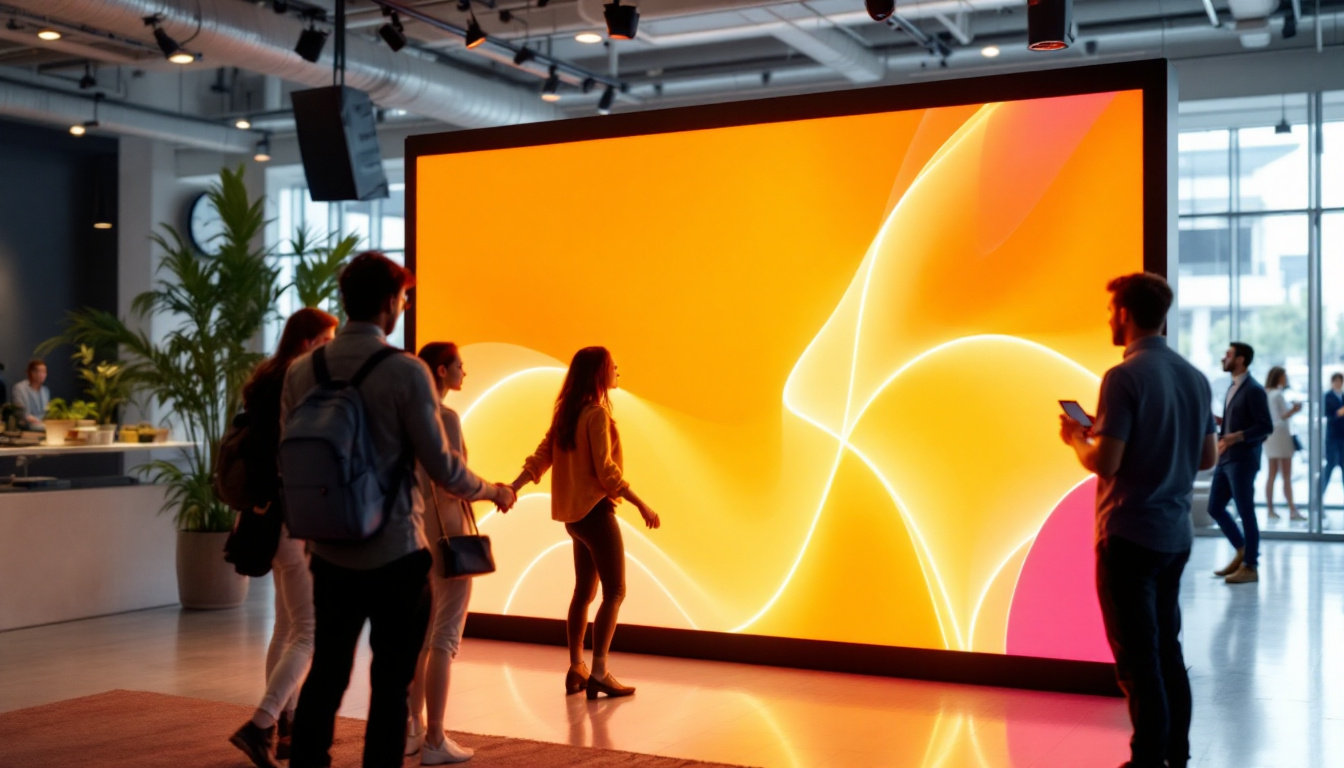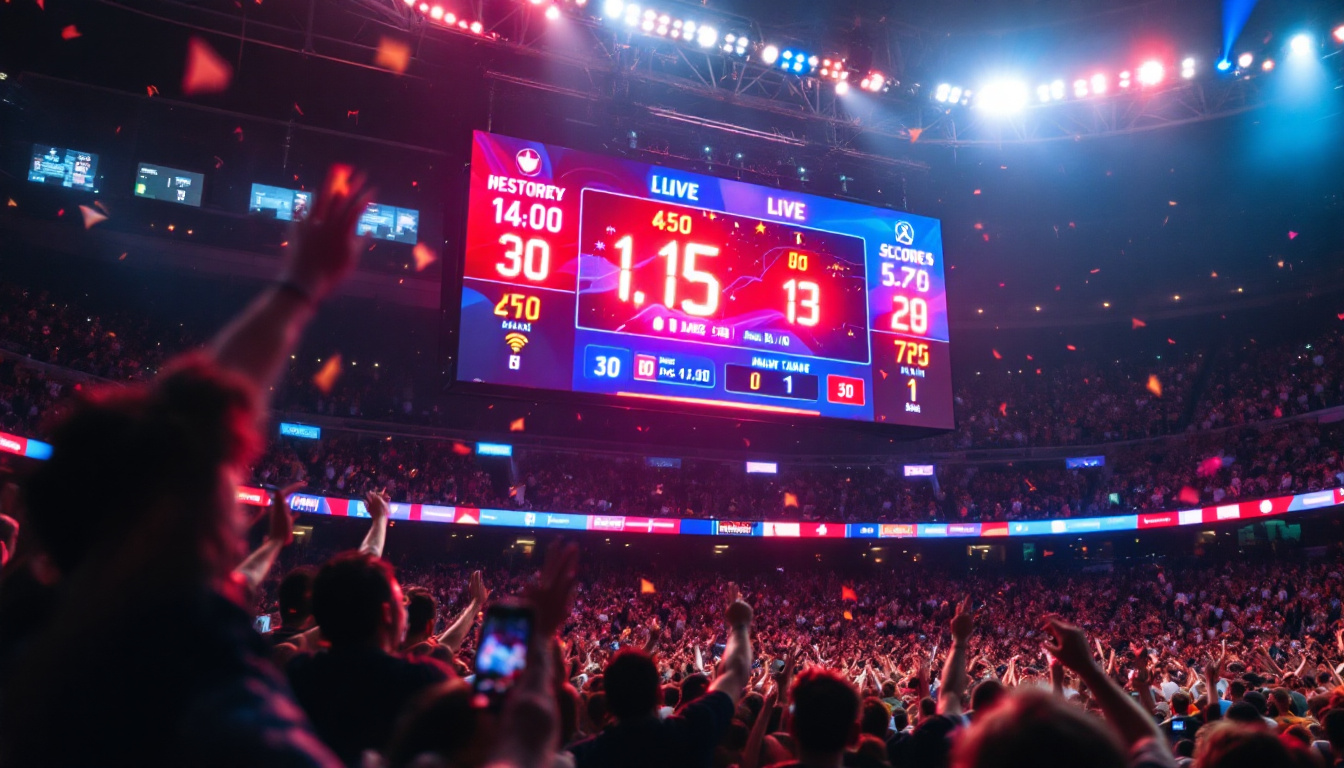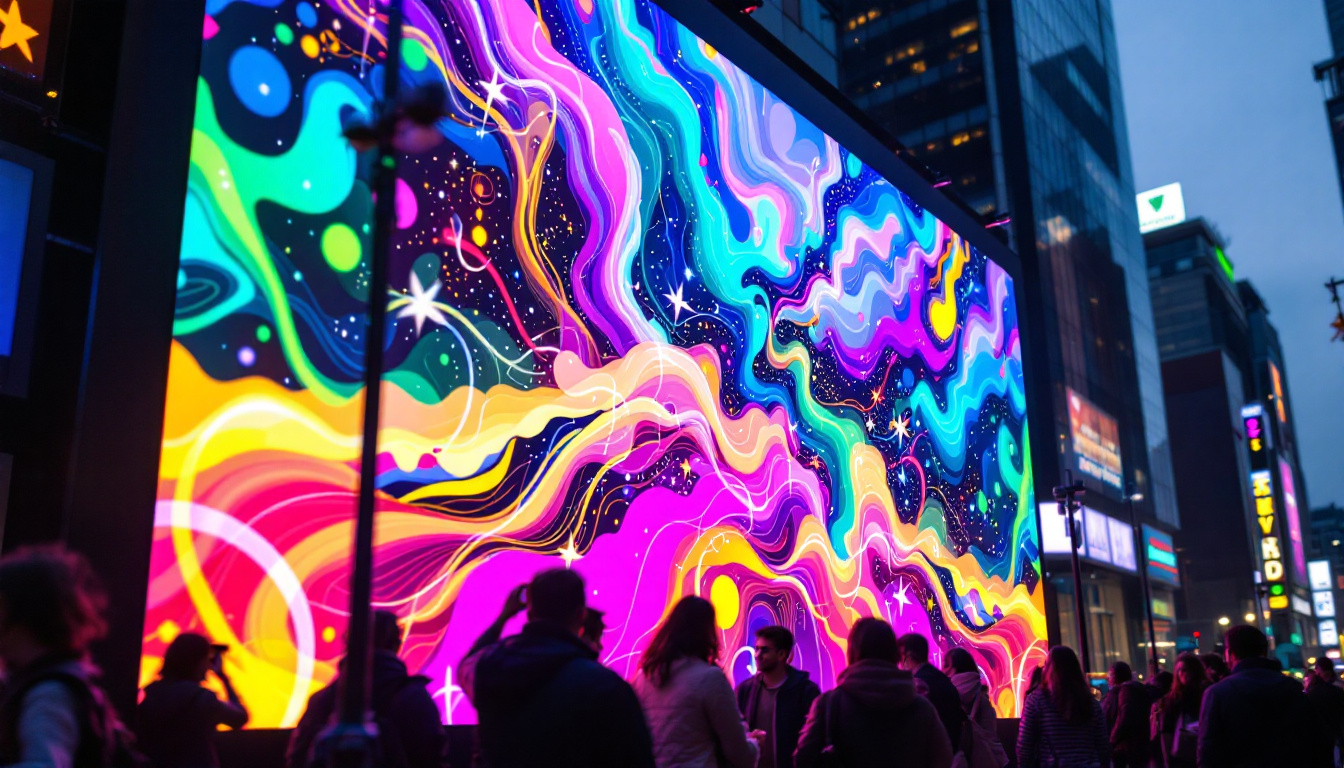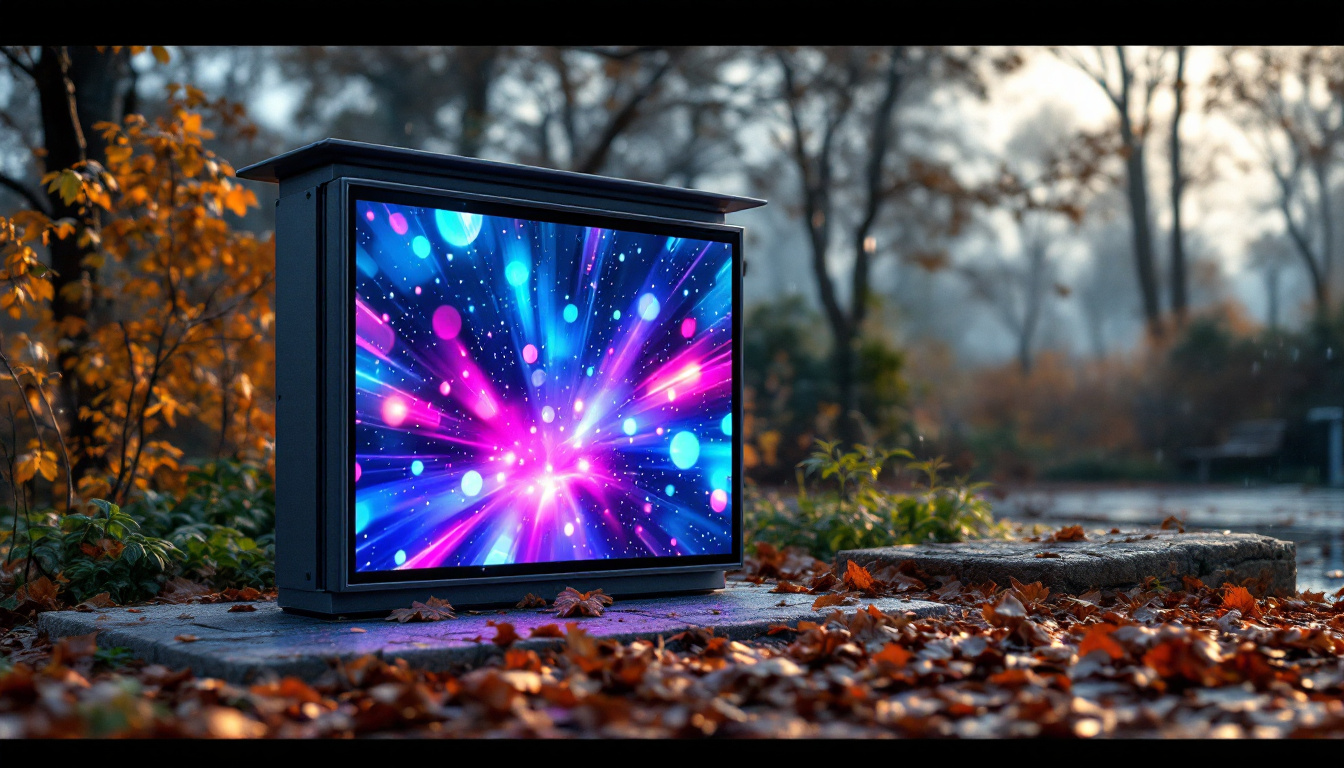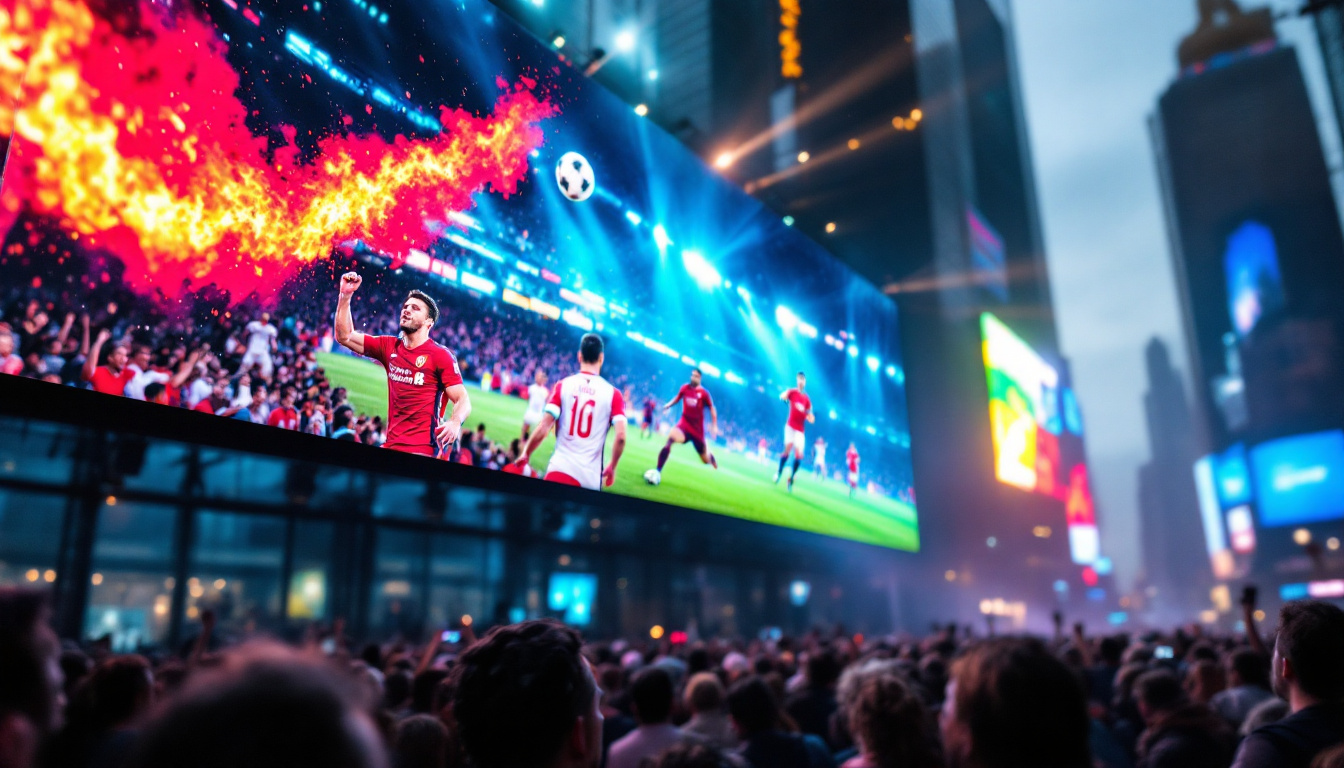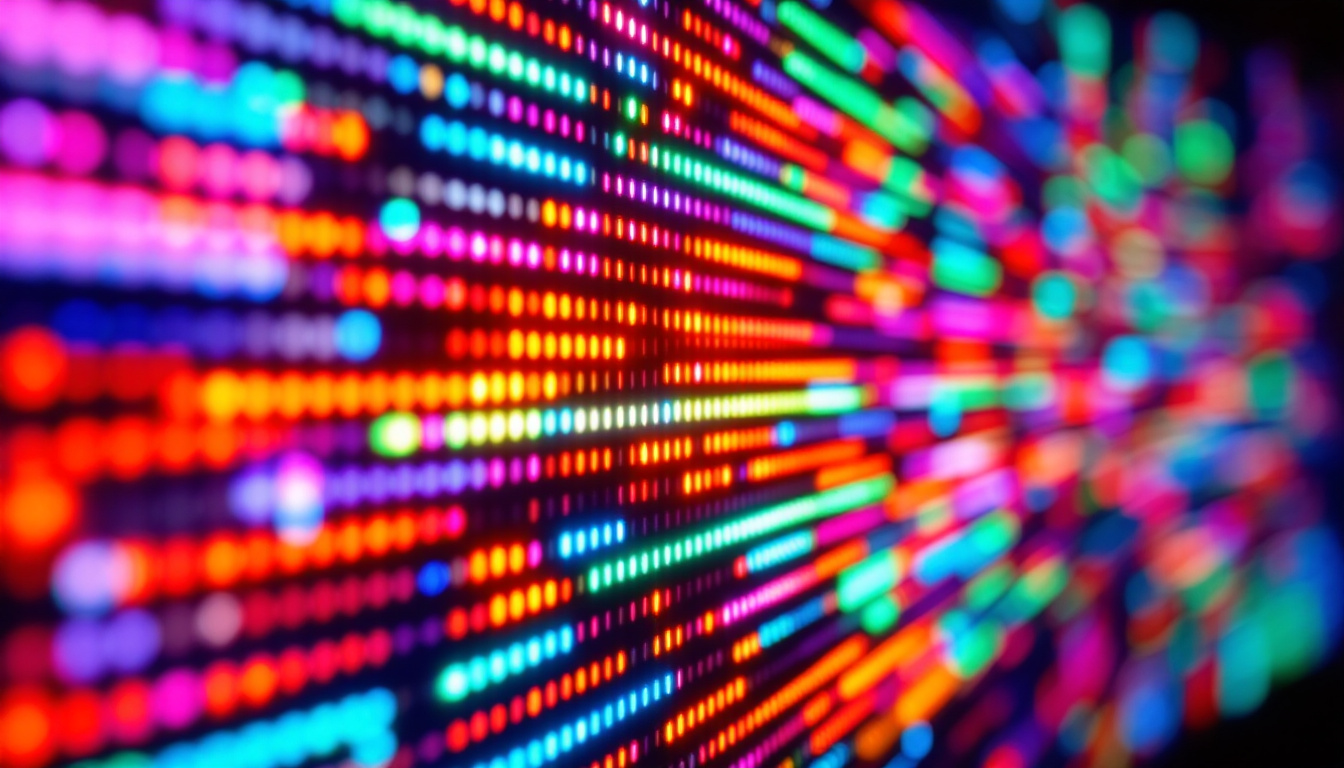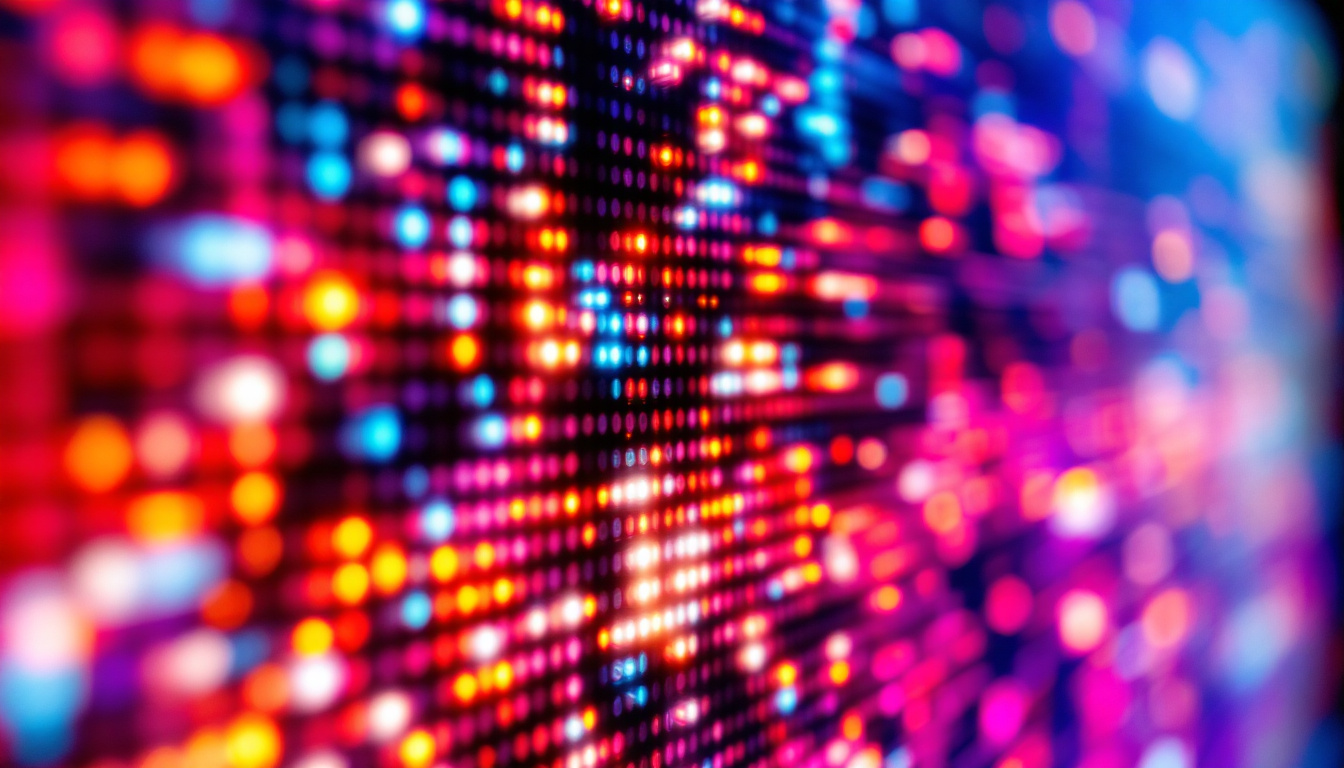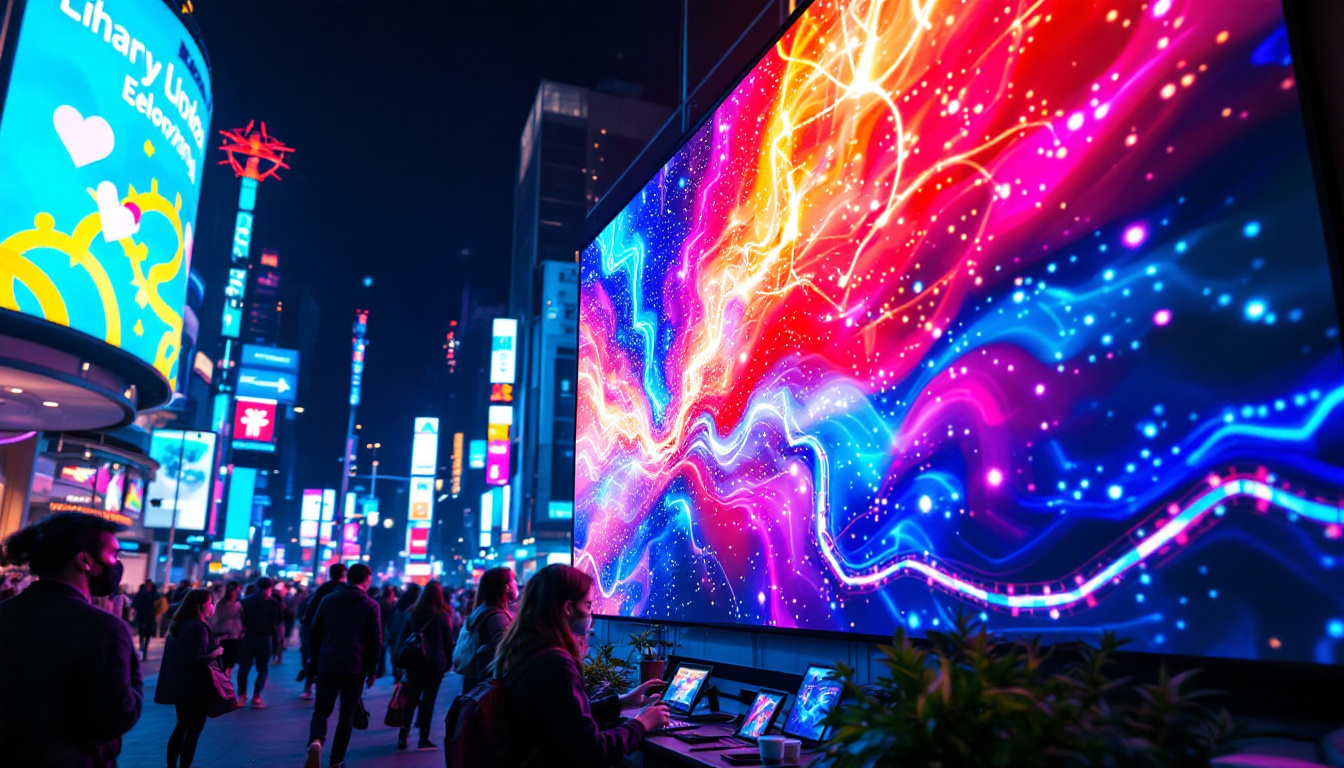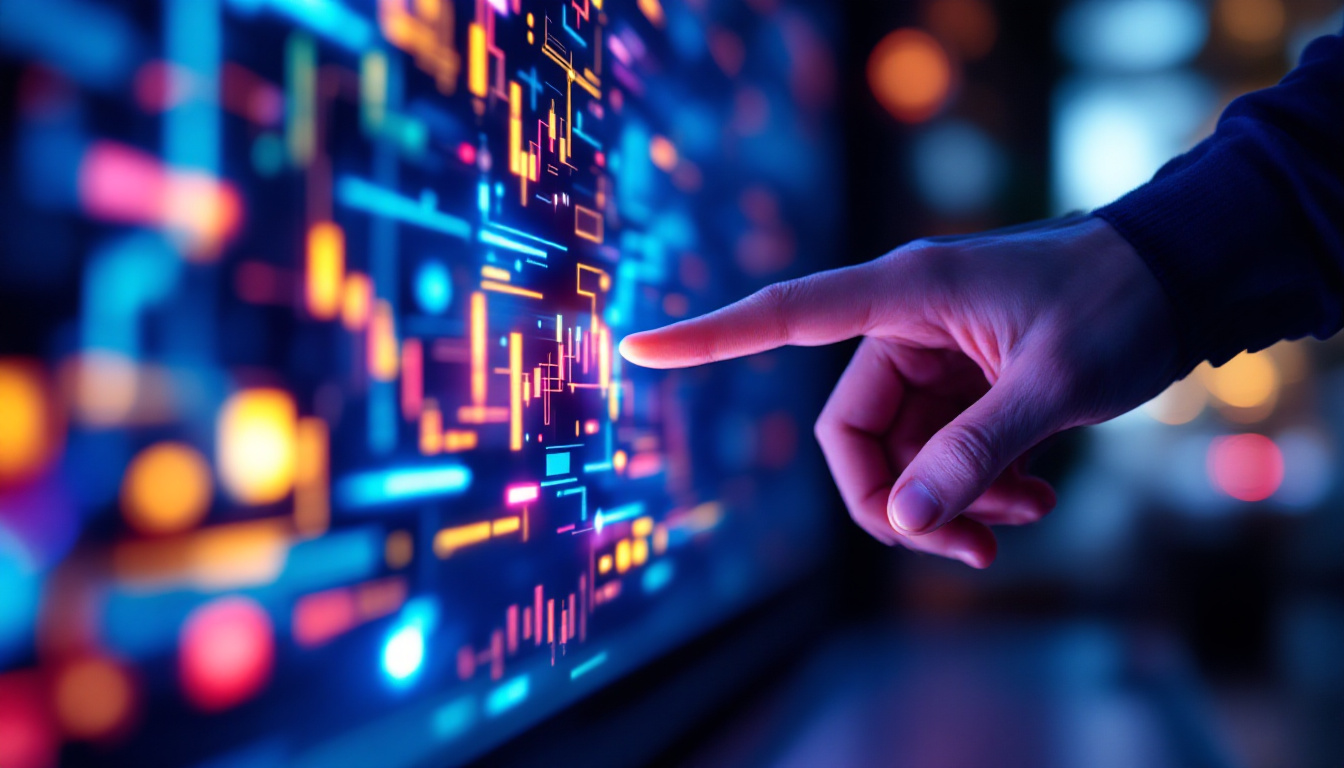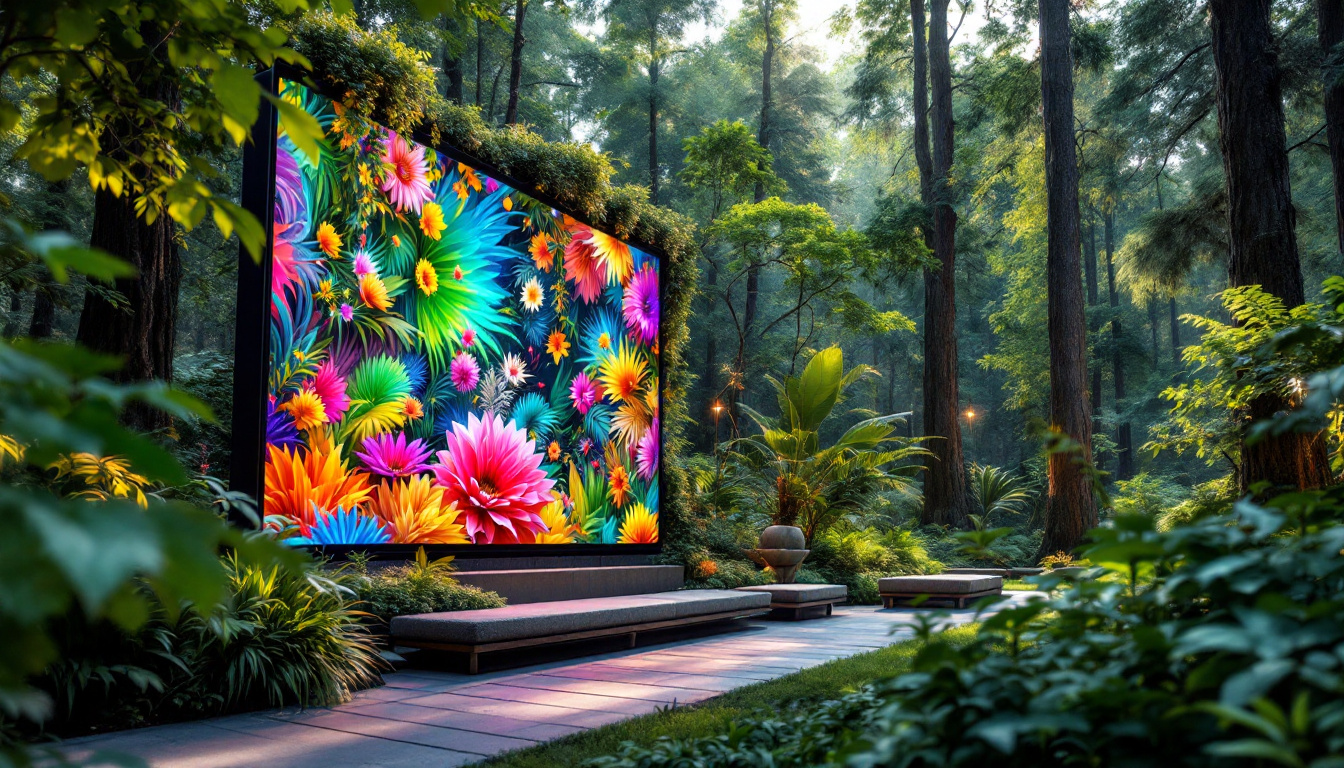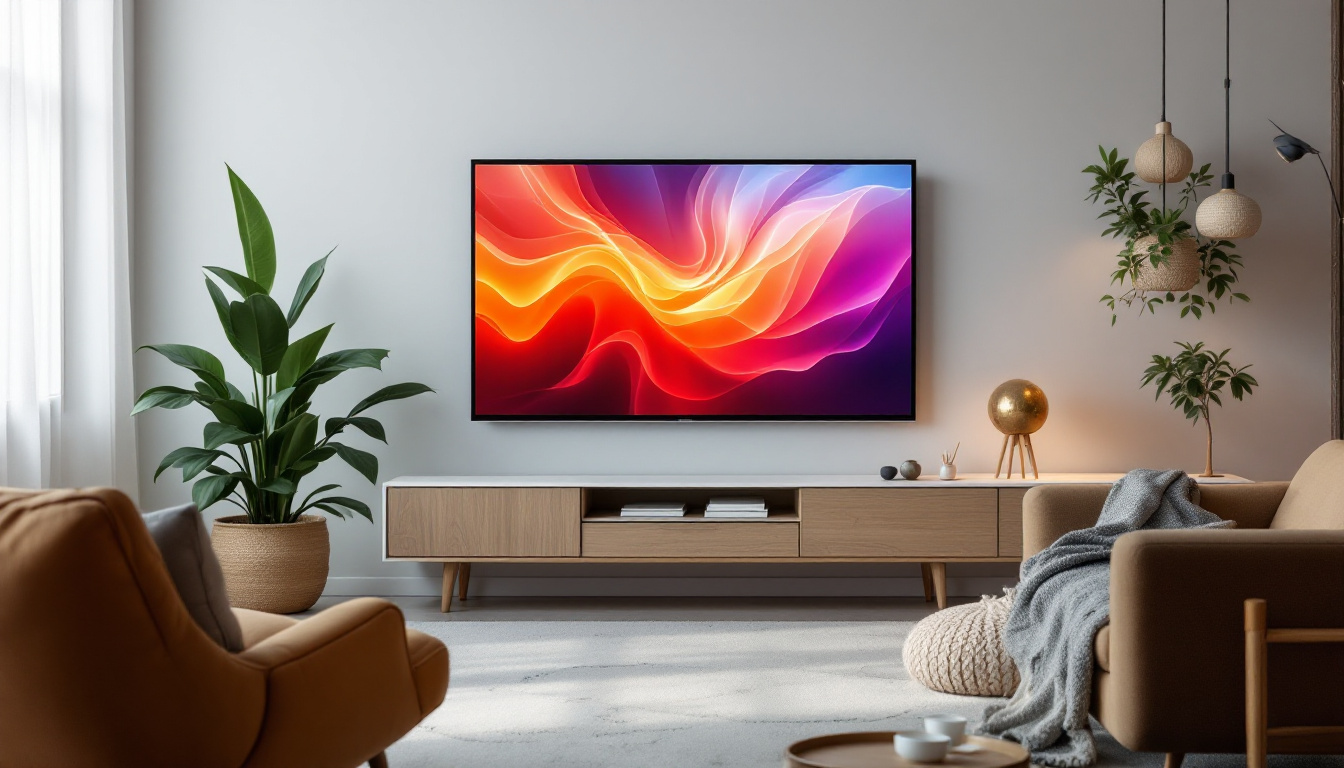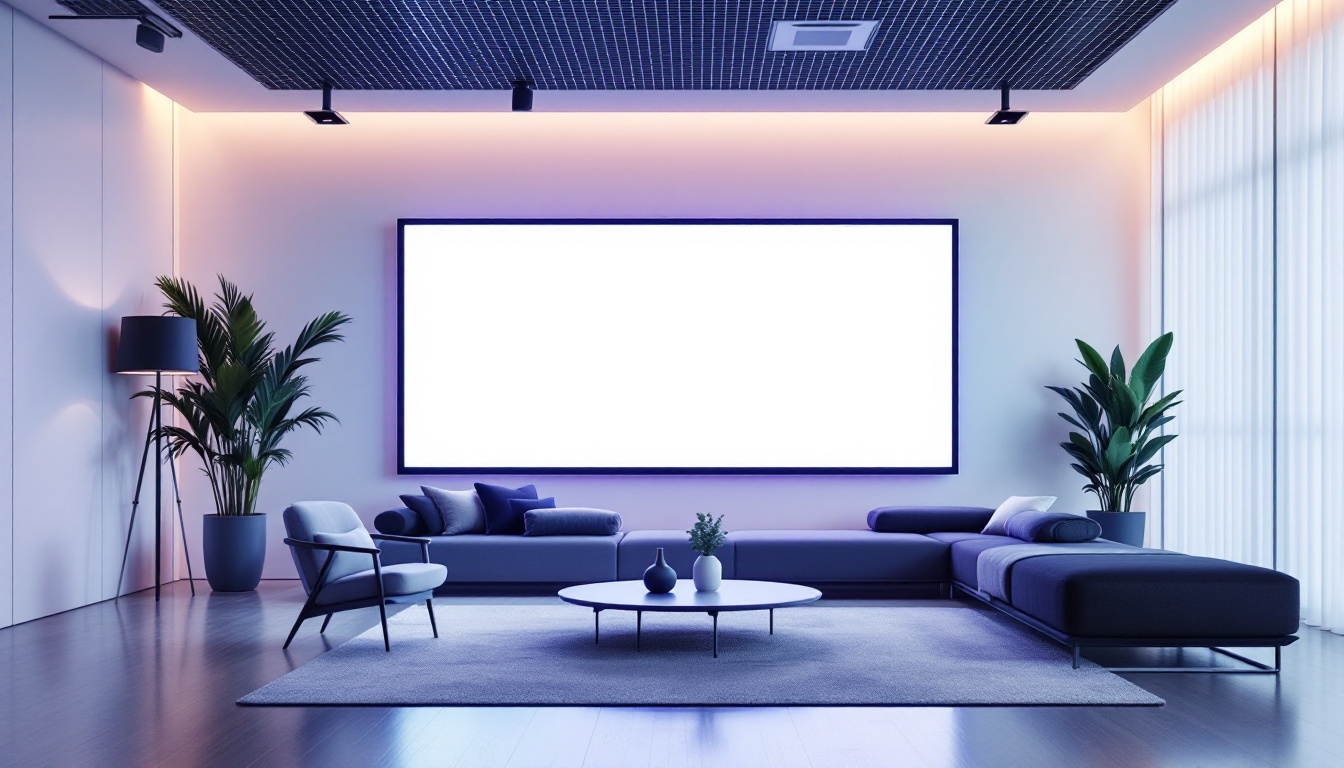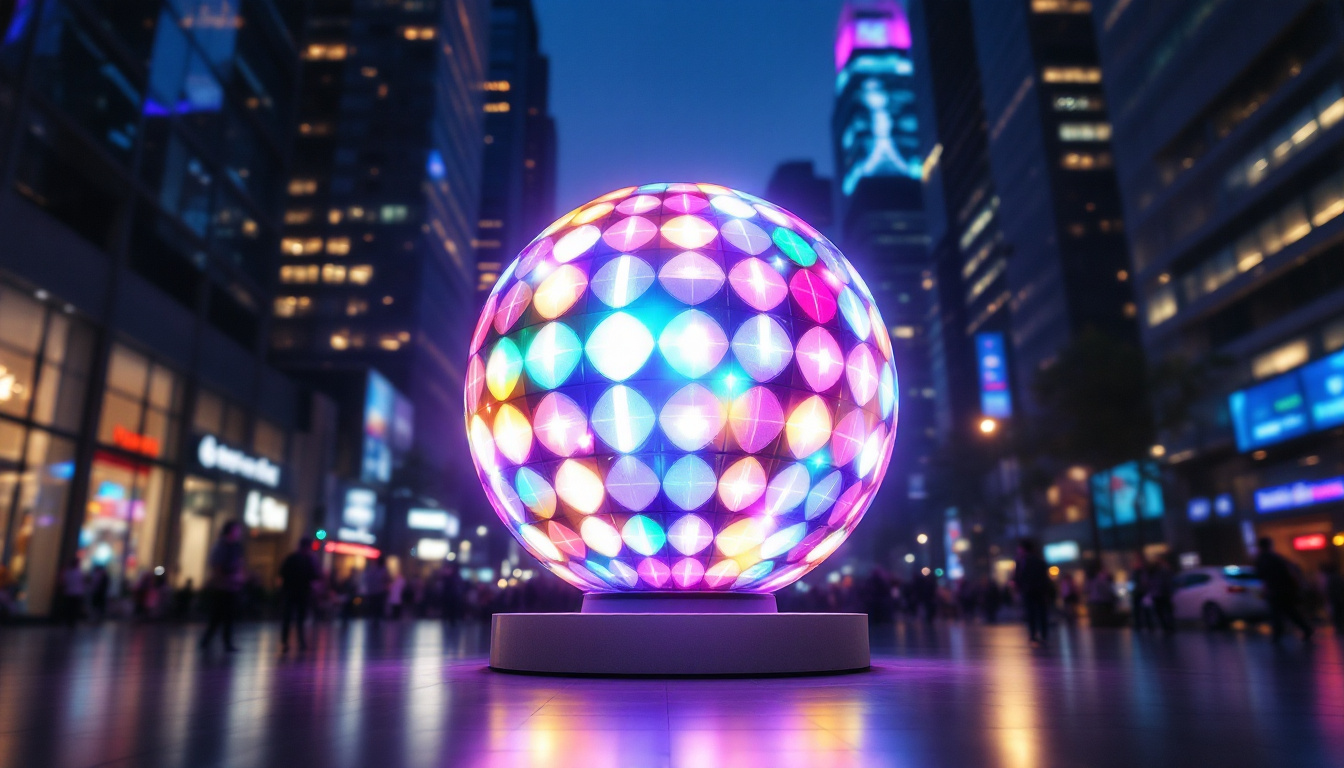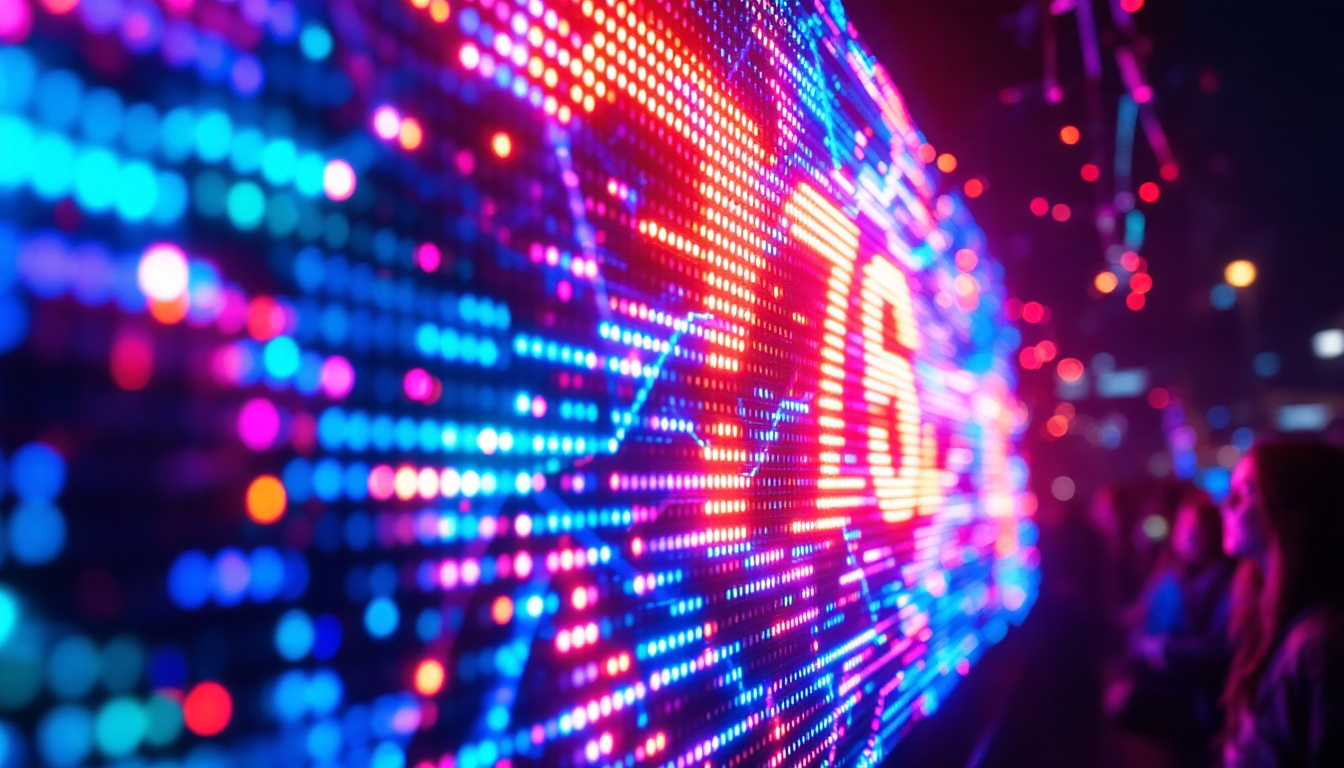LED displays have become an integral part of modern visual communication, offering vibrant colors and high clarity. Understanding the definition and functionality of LED displays is essential for anyone interested in technology, advertising, or digital signage. This article delves into the intricacies of LED displays, exploring their components, types, applications, and advantages.
What is an LED Display?
LED stands for Light Emitting Diode, a semiconductor device that emits light when an electric current passes through it. An LED display utilizes these diodes to create visual representations, ranging from simple indicators to complex screens used in various applications. Unlike traditional displays, LED displays are known for their brightness, energy efficiency, and longevity. Their ability to maintain vibrant colors and high contrast ratios makes them a preferred choice in many settings, from advertising billboards to intricate digital signage.
How LED Displays Work
The operation of an LED display is based on the principles of electroluminescence. When electricity flows through the semiconductor material in an LED, it excites the atoms, causing them to release energy in the form of light. The color of the light emitted depends on the materials used in the diode. By combining different colored LEDs—typically red, green, and blue (RGB)—displays can produce a wide spectrum of colors. This RGB combination allows for the creation of millions of color variations, enabling displays to render rich and dynamic images.
Each pixel in an LED display is made up of these RGB components, allowing for the creation of detailed images and videos. The arrangement and density of these pixels determine the display’s resolution, which is crucial for clarity and detail in the visuals presented. Higher pixel density results in sharper images, making LED displays particularly effective for applications where detail is paramount, such as in medical imaging or high-definition video production.
Types of LED Displays
LED displays come in various types, each designed for specific applications. The most common types include:
- Direct View LED Displays: These displays are made up of individual LED modules that can be assembled into larger screens. They are often used in outdoor advertising and large events due to their high brightness and visibility. Their modular nature allows for flexibility in size and shape, making them suitable for a wide range of installations, from stadiums to concert venues.
- LED Backlit Displays: These displays use LEDs to backlight an LCD screen. This combination enhances brightness and contrast, making them popular in televisions and computer monitors. The use of LED backlighting not only improves visual quality but also contributes to energy savings compared to traditional fluorescent backlighting.
- Organic LED (OLED) Displays: OLED technology uses organic compounds to emit light. These displays offer better color accuracy and contrast ratios, making them ideal for high-end televisions and smartphones. Additionally, OLED displays can be made thinner and more flexible than traditional LED displays, opening up new possibilities for innovative design in consumer electronics.
In recent years, advancements in LED technology have led to the development of MicroLED displays, which consist of tiny, individual LEDs that can create high-resolution images without the need for a backlight. This technology promises even greater energy efficiency and improved color performance, making it an exciting area of research and development in the display industry. As LED technology continues to evolve, we can expect to see even more applications and enhancements that will further revolutionize how we interact with visual content.
Applications of LED Displays
LED displays have found their way into numerous sectors, revolutionizing the way information is presented. Their versatility makes them suitable for various applications, including:
Advertising and Marketing
One of the most prominent uses of LED displays is in advertising. Billboards, storefronts, and event venues utilize LED technology to capture attention with bright, dynamic visuals. The ability to change content quickly allows advertisers to tailor messages based on time, audience, or event, making LED displays a powerful tool for marketing strategies. Furthermore, the interactivity of some LED displays enables brands to engage consumers in real-time, creating immersive experiences that can significantly enhance brand loyalty and recognition. For instance, campaigns that incorporate social media feeds or user-generated content can foster a sense of community and encourage participation, ultimately driving sales and increasing brand visibility.
Entertainment and Events
In the entertainment industry, LED displays are ubiquitous. Concerts, festivals, and sports events feature large LED screens that enhance the audience experience by providing live feeds, graphics, and animations. The high brightness and contrast of LED displays ensure visibility even in outdoor settings, making them ideal for large crowds. Beyond just visuals, these displays can also synchronize with sound systems to create a cohesive audio-visual experience that captivates audiences. Additionally, advancements in LED technology, such as flexible displays and high-resolution panels, allow for creative staging options, enabling event organizers to design unique backdrops and interactive installations that push the boundaries of traditional event production.
Information Displays
LED displays are also widely used for information dissemination. public transportation systems, airports, and corporate environments utilize LED screens to display real-time information, such as arrival and departure times, announcements, and directions. Their clarity and visibility make them effective for communicating important messages to the public. In educational settings, LED displays can serve as powerful teaching tools, allowing for the presentation of dynamic content that can enhance learning experiences. From displaying educational videos to interactive quizzes, these displays can engage students in ways that traditional methods cannot. Moreover, the integration of LED technology in smart cities is paving the way for more efficient communication with citizens, providing timely updates on traffic conditions, weather alerts, and local events, thereby fostering a more informed community.
Advantages of LED Displays
LED displays offer several advantages over traditional display technologies, making them a preferred choice in many applications. Some of the key benefits include:
Energy Efficiency
LED technology is known for its energy efficiency. LED displays consume significantly less power compared to older technologies like incandescent or fluorescent displays. This not only reduces electricity costs but also minimizes environmental impact, making LED displays a more sustainable option.
Longevity and Durability
LED displays have a long operational life, often exceeding 50,000 hours. This longevity translates to lower maintenance costs and reduced frequency of replacements. Additionally, LED displays are more resistant to shock and vibration, making them suitable for various environments, including outdoor settings where weather conditions can be unpredictable.
High Brightness and Contrast
One of the standout features of LED displays is their brightness. They can produce vivid colors and high contrast ratios, ensuring that visuals remain clear and engaging, even in direct sunlight. This characteristic is particularly beneficial for outdoor advertising and events, where visibility is crucial.
Challenges and Considerations
While LED displays offer numerous benefits, there are also challenges and considerations that users should keep in mind. Understanding these factors can help in making informed decisions when selecting and implementing LED technology.
Initial Cost
The initial investment for LED displays can be higher compared to traditional display technologies. However, this cost is often offset by the long-term savings in energy and maintenance. It is essential to consider the total cost of ownership when evaluating the feasibility of LED displays for specific applications.
Heat Generation
LED displays can generate heat during operation, which may require additional cooling solutions in certain environments. Proper ventilation and temperature management are necessary to ensure optimal performance and longevity of the display.
Viewing Angle
While many LED displays offer wide viewing angles, some types may have limitations in this regard. It is crucial to consider the intended viewing distance and angle when selecting an LED display, especially for applications where viewers may be positioned at various angles.
Future Trends in LED Display Technology
The LED display industry continues to evolve, driven by advancements in technology and changing consumer demands. Several trends are shaping the future of LED displays:
MicroLED Technology
MicroLED is an emerging technology that involves using tiny LEDs to create displays with even higher resolution and color accuracy. This technology promises to deliver superior image quality while maintaining the energy efficiency and longevity associated with traditional LED displays. As MicroLED technology matures, it is expected to revolutionize the display market, particularly in high-end applications.
Flexible and Transparent Displays
Innovations in materials and manufacturing processes are leading to the development of flexible and transparent LED displays. These displays can be integrated into various surfaces, including windows and clothing, opening up new possibilities for advertising and design. The ability to create curved or bendable displays enhances the versatility of LED technology.
Smart Integration
The integration of smart technology into LED displays is another significant trend. With the rise of the Internet of Things (IoT), LED displays can be connected to networks, allowing for real-time data updates, remote management, and enhanced interactivity. This smart integration enables more dynamic and engaging content delivery, enhancing the overall user experience.
Conclusion
LED displays have transformed the way information is presented, offering vibrant visuals and energy efficiency. Their versatility has made them a staple in advertising, entertainment, and information dissemination. While challenges exist, the advantages of LED technology often outweigh the drawbacks, making it a preferred choice for many applications.
As technology continues to advance, the future of LED displays looks promising, with innovations such as MicroLED, flexible displays, and smart integration paving the way for even more exciting possibilities. Understanding LED displays and their capabilities is essential for leveraging their potential in various sectors, ensuring effective communication and engagement in an increasingly digital world.
Discover LumenMatrix’s Innovative LED Solutions
Ready to elevate your visual communication with the latest in LED technology? Look no further than LumenMatrix, a pioneer in crafting immersive LED display modules tailored to your needs. From vibrant Indoor and Outdoor LED Wall Displays to dynamic Vehicle and Sports LED Displays, LumenMatrix offers a comprehensive range of solutions including LED Poster Displays, Floor LED Displays, Custom LED Displays, All-in-One LED Displays, and LED Transparent Displays. Embrace the future of digital signage with LumenMatrix and transform your space into a captivating visual experience. Check out LumenMatrix LED Display Solutions today and let your brand shine brighter than ever.

